Formula C28H44O Melting point 160 °C | Molar mass 396.65 g/mol Boiling point 250 °C | |
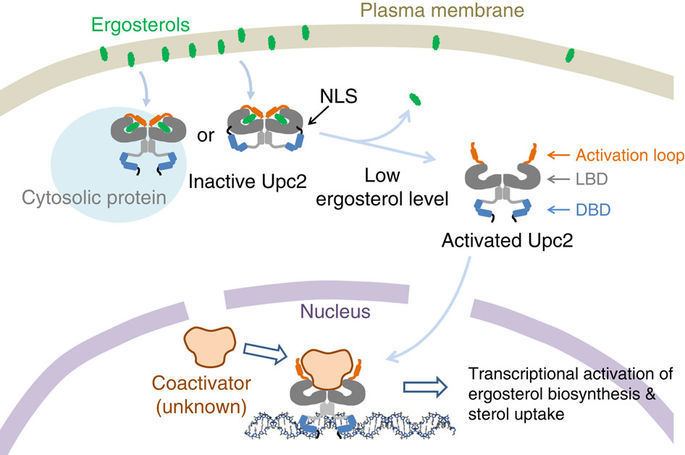 | ||
Ergosterol (ergosta-5,7,22-trien-3β-ol) is a sterol found in cell membranes of fungi and protozoa, serving many of the same functions that cholesterol serves in animal cells. Because many fungi and protozoa cannot survive without ergosterol, the enzymes that create it have become important targets for drug discovery. Ergosterol is a provitamin form of vitamin D2; exposure to ultraviolet (UV) light causes a chemical reaction that produces vitamin D2.
Contents
Role in fungi

Ergosterol (ergosta-5,7,22-trien-3β-ol) is a sterol found in fungi, and named for ergot, the common name of members of the fungal genus Claviceps from which ergosterol was first isolated. Ergosterol is a component of yeast and other fungal cell membranes, serving many of the same functions that cholesterol serves in animal cells. Its specificity in higher fungi is thought to be related to the climatic instabilities (highly varying humidity and moisture conditions) encountered by these organisms in their typical ecological niches (plant and animal surfaces, soil). Thus, despite the added energy requirements of ergosterol synthesis (if compared to cholesterol), ergosterol is thought to have evolved as a nearly ubiquitous, evolutionarily advantageous fungal alternative to cholesterol.
Target for antifungal drugs
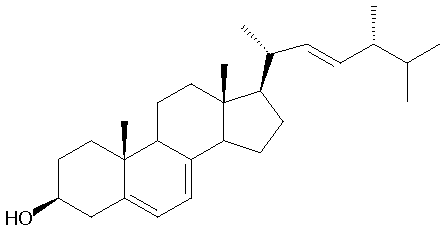
Because ergosterol is present in cell membranes of fungi, yet absent in those of animals, it is a useful target for antifungal drugs. Ergosterol is also present in the cell membranes of some protists, such as trypanosomes. This is the basis for the use of some antifungals against West African sleeping sickness.
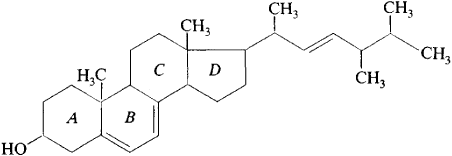
Amphotericin B, an antifungal drug, targets ergosterol. It binds physically to ergosterol within the membrane, thus creating a polar pore in fungal membranes. This causes ions (predominantly potassium and protons) and other molecules to leak out, which will kill the cell. Amphotericin B has been replaced by safer agents in most circumstances, but is still used, despite its side effects, for life-threatening fungal or protozoan infections.
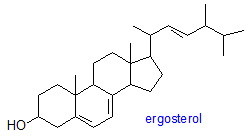
Miconazole, itraconazole, and clotrimazole work in a different way, inhibiting synthesis of ergosterol from lanosterol by interfering with 14α-demethylase . Ergosterol is a smaller molecule than lanosterol; it is synthesized by combining two molecules of farnesyl pyrophosphate, a 15-carbon-long terpenoid, into lanosterol, which has 30 carbons. Then, two methyl groups are removed, making ergosterol. The "azole" class of antifungal agents inhibit the enzyme that performs these demethylation steps in the biosynthetic pathway between lanosterol and ergosterol.
Target for antiprotozoal drugs
Some protozoa, including Trichomonas and Leishmania are inhibited by drugs that target ergosterol synthesis and function
As a vitamin D2 precursor
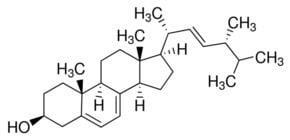
Ergosterol is a biological precursor of vitamin D2, the chemical name of which is ergocalciferol. Exposure to ultraviolet light causes a photochemical reaction that converts ergosterol to ergocalciferol.

This happens naturally to a certain extent, and many mushrooms are irradiated after harvest to increase their Vitamin D content. Fungi are also grown industrially so that ergosterol can be extracted and converted to Vitamin D for sale as a dietary supplement and food additive.
Preparations of irradiated ergosterol containing a mixture of previtamin and D vitamin were called Viosterol in the 1930s.
Toxicity
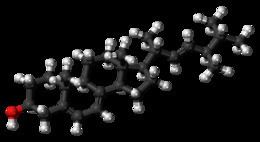
Ergosterol powder is an irritant to skin, eyes, and the respiratory tract. Ingestion of large amounts can cause hypercalcemia, which (if prolonged) can lead to calcium salt deposits in the soft tissues and, in particular, the kidneys.
